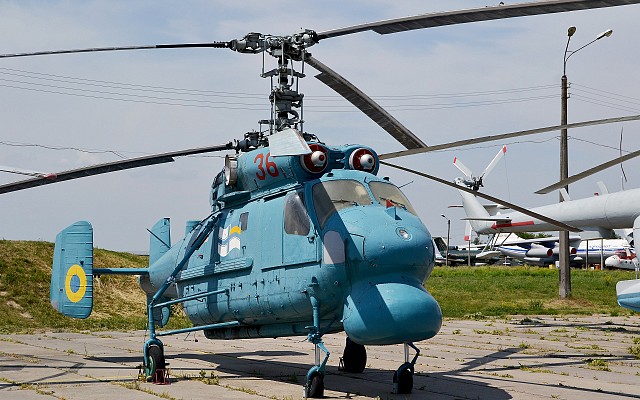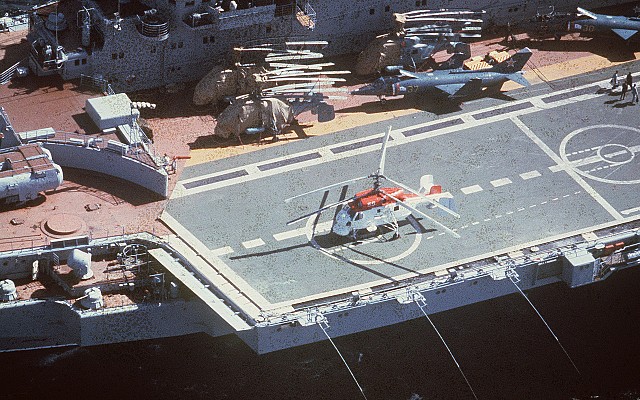Kamov Ka-25
NATO: Hormone
Overview
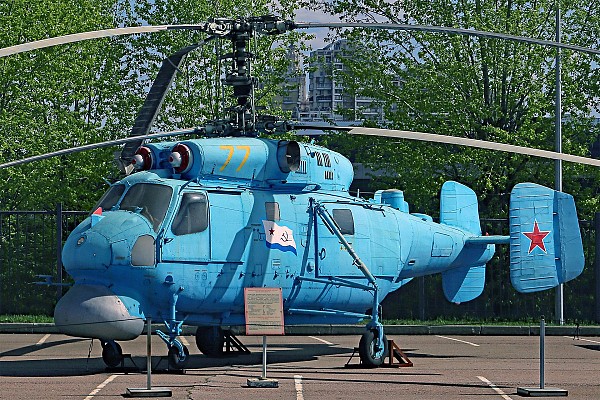
Ka-25BSh
Former Soviet Ka-25BSh (NATO: Hormone A) anti-submarine warfare helicopter seen on display in a museum in Russia.
Source: Schneeleopard2 -
© CC BY-SA 4.0
275 Ka-25BSh
50 Ka-25Ts
Description
Introduction
The Ka-25 is a naval helicopter of Soviet origin. Development started in 1957 and it was accepted for service in 1966. The most numerous version was the anti-submarine warfare variant. It has the NATO designation Hormone.
Design
The Ka-25 is made out of aluminum and has the cockpit in the front and a crew compartment in the middle. A single sliding door is mounted on the left side. The engines are mounted on top next to the rotor hub. Since the Ka-25 uses two coaxial rotors there is no need for a tail rotor. The landing gear is not retractable.
Firepower
Normally the Ka-25 Hormone is unarmed. In the anti-submarine role a single torpedo can be carried in a container that can be attached to the belly.
Sensors
In the anti-submarine role the Ka-25 is fitted with an undernose radome, a dipping sonar, an downward looking sensor in the tail and a wide array of avionics and navigation systems. Other versions carry a simpler avionics package.
Mobility
The Ka-25 is fitted with two Glushenkov Mars turboshaft engines rated at 900 shaft horse power. The maximum speed is over 200 km/h at optimal altitude. The ferry range is 400 km on internal fuel.
Users
The main user of the Ka-25 was the Soviet navy. It was also exported to several Russian allies. In Soviet service it has been supplemented by the newer and more capable Ka-27.
Variants
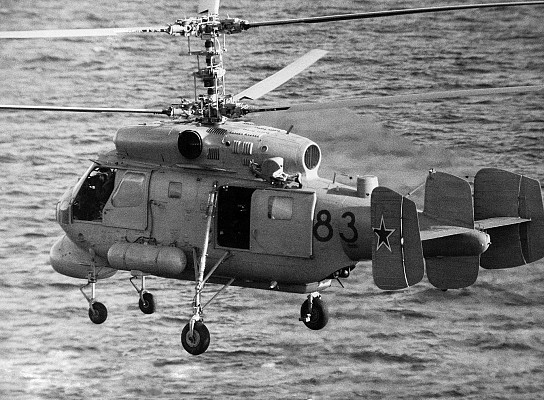
Ka-25BSh
The Ka-25BSh is the original version of the Ka-25 family and has the NATO reporting name Hormone-A. Its main role is anti-submarine warfare. It is fitted with an undernose radome, a dipping sonar, an downward looking sensor in the tail and a wide array of avionics and navigation systems. Armament was not standard but could be carried in an external underbelly box. Sonobuoys and smoke-floats can be attached to the sides of the fuselage.
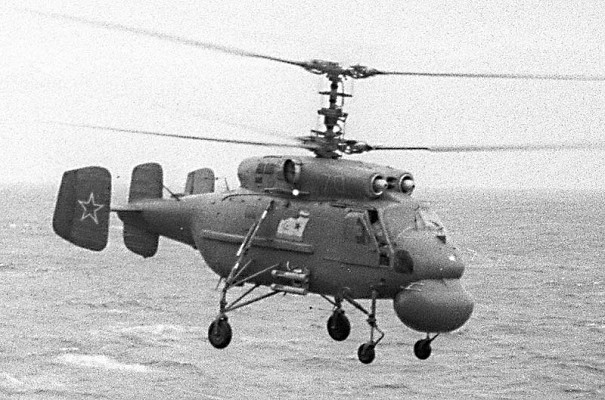
Ka-25Ts
The Ka-25Ts was used in the mid Cold War era for over the horizon targeting and mid course guidance of SS-N-3 Shaddock and SS-N-12 Sandbox missiles. It has the NATO reporting name Hormone-B. The Ka-25Ts has a larger, bulbous radome and a datalink pod at the rear. The landing gear can be retracted to remove it from the scanning pattern.
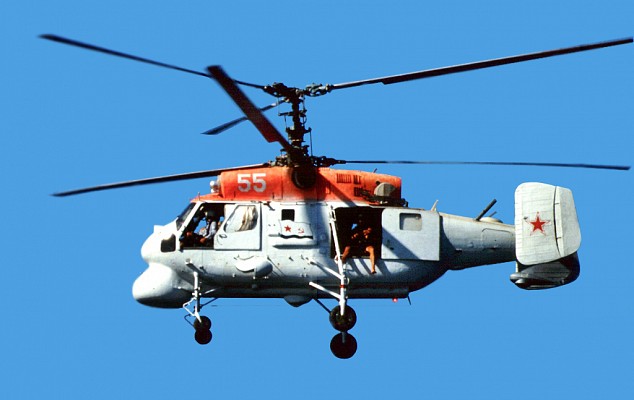
Ka-25PS
The Ka-25PS is a search and rescue variant with the NATO reporting name Hormone-C. Most, if not all, are converted from redundant Ka-25BSh. The Ka-25PS is stripped from all ASW equipment, except for the undernose radar. A hoist and flood lights have been fitted.
Details
Media
Related articles
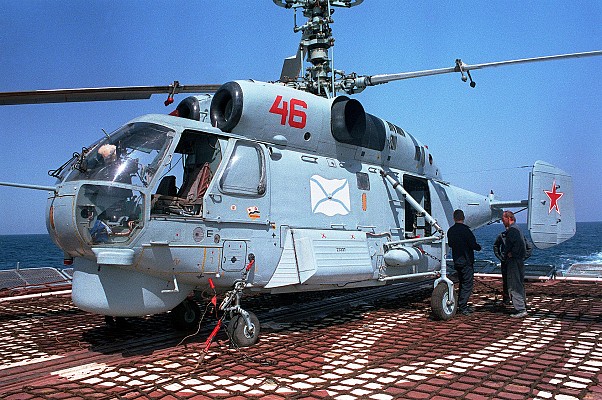
Kamov Ka-27PL
The Ka-27PL is the successor to the Ka-25 in the anti-submarine role. It is a larger aircraft with more capable sensors and carries more armement.
